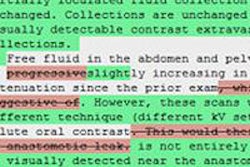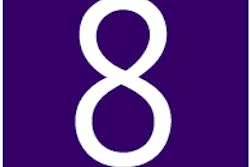Wouldn't it be great if while you're interpreting a set of images, you could simultaneously review a group of similar cases from previously reported studies? Researchers from the Cleveland Clinic have developed just such a tool using open-source software.
They applied an open-source enterprise content searching platform that can be used to search for similar radiology cases during the imaging interpretation process, offering clinical decision support for radiologists.
Dr. David Piraino shared early experiences with the searching approach during a scientific session at the recent Society for Imaging Informatics in Medicine (SIIM) 2013 annual meeting in Grapevine, TX. In the study, the text-based searching tool provided relevant comparisons in 15 test bone and joint MRI cases.
Document-oriented data
Most patient-specific medical information is document-oriented with varying amounts of metadata. While most of this information is textual and semistructured, electronic medical record (EMR) systems are not optimized to present it in the most useful format; EMRs currently show information only in reverse chronological order, he said.
To provide relevant historical information at the time of care during the interpretation of radiology images, Piraino applied the open-source Solr software for searching radiology reports. Inspiration for the project came from Dr. Henry Swett, who described in 1989 the concept of presenting similar radiology cases while interpreting a present case. Piraino thought the Apache Lucene/Solr open-source movement could be a good tool for putting Swett's ideas into practice.
After radiology reports over a four-year period were gathered from the institution's RIS, a text-processing engine extracted the reports' results, impression, exam description, location, history, and date, Piraino said. A moderately high-end computer (a single Intel Xeon CPU, 8 GB of RAM, Ubuntu operating system) was used to index and provide Web access to the reports, which were deidentified except for their accession number.
It took less than 12 hours for one person to process 7 million reports into Solr, he said.
"We were [now] doing searches that we really couldn't do on our other systems," Piraino said.
As an example of how the search tool could be used, a musculoskeletal radiologist could perform an initial search for "MRI of the shoulder." As the radiologist dictates the report and finds a full-thickness tear of the supraspinatus tendon, he or she could repeat the search and bring up shoulder MRI scans with full-thickness tears of the supraspinatus tendon, Piraino said.
"All of this is really based on standard natural language processing; [there are] no syntactic searches," he said.
The researchers evaluated the technology's ability to identify similar historical cases using 15 bone and joint MRI cases that were reported during routine clinical practice. For all 15 cases, searches were completed within three seconds.
Only the top 10 matches returned by the search were considered. A bone and joint radiologist then determined how many of the matches illustrated the diagnosis in question.
Overall, 7.8 of the 10 highest-rated reports showed a similar case considered to be highly related to the present case. The search technology's best performance yielded 10 out of 10 cases that were relevant, while its worst performance yielded two out of 10.
Another advantage of the Solr technology is that it allows for specific field searches, such as by date range, specific exams, or specific modalities, Piraino said.
Although the technology so far has only been used to search radiology reports, future directions could apply similar approaches to search within the electronic medical record.
"We're also using fairly simple text-based search questions, and they're surprisingly good," he said. "Our major question is whether we need to add syntactic-based and lexiconal searches on top of that. We hope not."




















